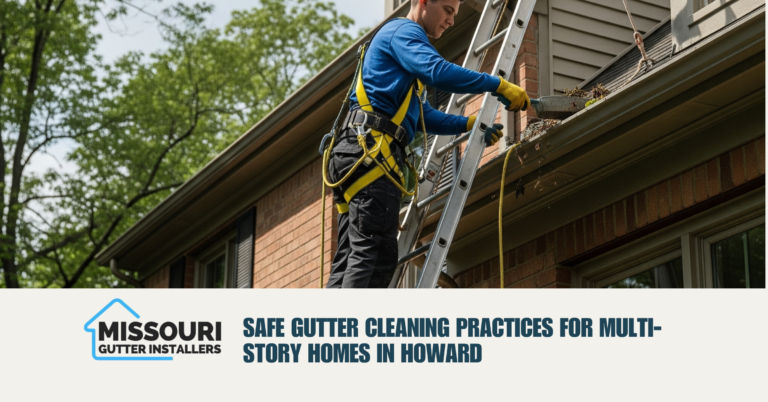When it comes to protecting your home from water damage, downspouts play a critical role, especially in areas like Boone, where sudden and heavy rainfalls are common. While gutters collect water from your roof, downspouts are responsible for directing that water away from your home’s foundation. If your downspouts are too small or improperly placed, they can become overwhelmed during storms, leading to overflowing gutters, erosion, and even basement flooding.
That’s why choosing the right downspout size for your Boone home is more than just a design decision, it’s a matter of proper drainage and long-term protection.
Why Downspout Size Matters
Many homeowners focus on gutter width and forget that downspouts are equally important. The wrong size can create bottlenecks in your drainage system, causing water to back up, overflow, or leak around the base of your home.
In Boone, where rainfall can exceed 40 inches annually, effective drainage is essential. A correctly sized downspout ensures that water flows efficiently through the system, reducing stress on your gutters and preventing water-related damage to your roof, siding, and foundation.
Standard Downspout Sizes and What They Mean
Downspouts typically come in a few standard sizes, with two shapes: rectangular and round.
- 2” x 3” rectangular – Suitable for light to moderate rainfall, typically used in small gutter systems.
- 3” x 4” rectangular – Handles larger volumes of water, ideal for moderate to heavy rainfall.
- 4” x 5” rectangular – Common for commercial buildings or homes with very large roofs.
- Round downspouts (3” or 4”) – Often used for aesthetic or architectural reasons, but volume varies depending on diameter.
In Boone’s climate, the 3” x 4” downspout is the most commonly recommended option for residential properties, especially for homes with steep roofs or large surface areas that collect more water during storms.
How to Calculate the Right Downspout Size
There are a few important factors that determine what size downspout you need:
- Roof Area: Larger roofs collect more water. You can calculate this by multiplying the length by the width of each roof section that drains into a single gutter line.
- Roof Pitch: Steeper roofs shed water faster, increasing flow volume during rainfall.
- Rainfall Intensity in Boone: Boone experiences sudden downpours and storms. You must account for peak rainfall events when designing your drainage system.
- Gutter Size: The capacity of your gutters directly affects the flow rate and volume your downspouts must accommodate.
As a general rule, a 3” x 4” downspout can handle nearly twice the water flow of a 2” x 3” downspout. If your home has multiple stories or large roof segments that collect into a single gutter run, upgrading to the larger size is often necessary.
Signs Your Downspouts May Be Too Small
If you already have downspouts in place but suspect they aren’t doing the job during storms, look out for these signs:
- Gutters overflowing even when clean
- Water spilling over downspout openings
- Pooling water near the foundation
- Erosion in the landscape below the downspout exits
- Damp basements or crawl spaces after rain
These issues often indicate that your current downspouts can’t handle the volume of water your roof collects during Boone’s frequent rainstorms.
Additions That Improve Downspout Performance
Besides choosing the correct size, you can improve drainage and performance with these additions:
- Downspout extensions: Direct water further away from your foundation.
- Splash blocks: Prevent erosion by dispersing water flow.
- Rain barrels: Useful for capturing water and reducing flow pressure.
- Underground drainage systems: Ideal for sloped or flood-prone properties.
Pairing properly sized downspouts with these features will give you a comprehensive system to manage rain effectively.
Professional Installation Makes the Difference
Downspout performance is not only about size; it also depends on proper placement and secure attachment. A poorly installed system, even with the correct size, can still fail during peak conditions.
That’s why it’s best to consult a professional gutter and downspout installer in Boone. Local experts are familiar with the area’s climate, terrain, and building codes, and they can recommend the right solution for your home.
Final Thoughts
Choosing the right downspout size for your Boone property is crucial to managing heavy rainfall and preventing costly damage. An undersized downspout might seem like a small issue, but over time, it can lead to major problems for your home’s structure and foundation.
Whether you’re installing a new gutter system or upgrading an old one, don’t overlook your downspouts. Proper sizing, placement, and installation will ensure your home stays dry, your landscaping remains intact, and your investment is well protected, rain or shine.





